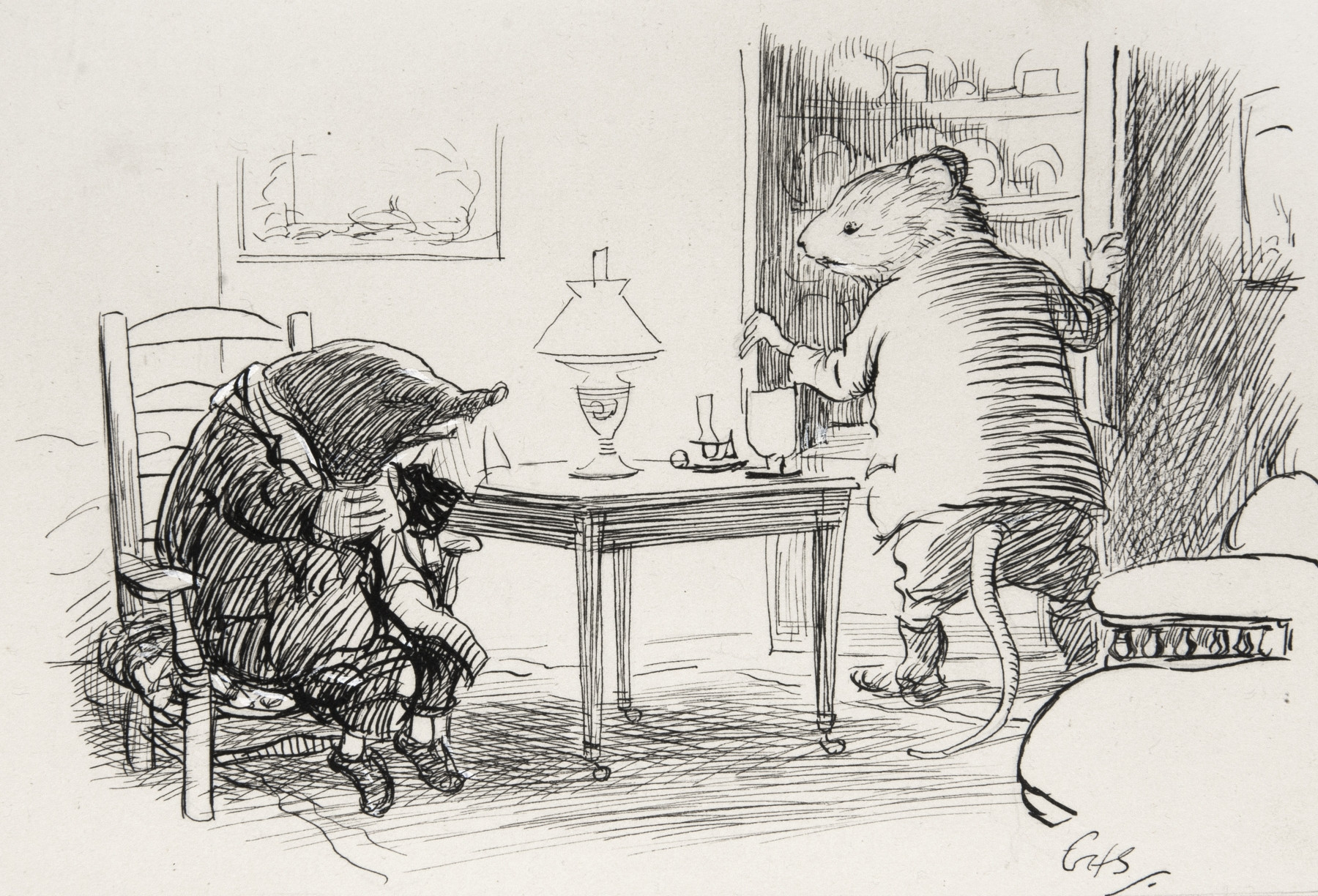
(click image to enlarge)
E H Shepard had a very high opinion of Kenneth Grahame’s The Wind in the Willows (1908), and considered it ‘one of the books – he had a mental list of them, he said – that should not be illustrated’ (Rawle Knox (ed), The Work of E H Shepard, London: Methuen, 1979, page 178). However, when offered the job, he accepted it. He was excited at the chance to attempt it and was sure that he could do better than those who had tried before: Paul Branson (1913), Nancy Barnhart (1922) and Wyndham Payne (1927). Grahame was sceptical as to Shepard’s suitability. But his own preferred choice, Arthur Rackham, had rejected the project when the book was first published, through pressure of work, and would not produce his own edition until 1940, after the author’s death.
Shepard visited Grahame at Church Cottage, Pangbourne, Berkshire, in order to persuade him of his worth. Perhaps thinking of A A Milne’s toys, Grahame told Shepard that ‘my animals are not puppets; they always make them puppets’, then added, as both plea and blessing, that ‘I love these little people; be kind to them.’ Unable to accompany Shepard down to the Thames, he,
told me of the river near by, of the meadows where Mole broke ground that spring morning, of the banks where Rat had his house, of the pools where Otter hid, and of Wild Wood way up on the hill about the river.
(E H Shepard, ‘Illustrating The Wind in the Willows’ The Horn Book, April 1954)
Shepard then went out to look and sketch, ‘and swore he could have seen Otter rising from the water, and Badger on the bank’ (Knox, 1979, page 178). He left Grahame ‘more excited at the prospect of that work than any other he had undertaken, in spite of its immense difficulty’ (Knox, 1979, page 180). Grahame, in turn, was delighted with the results.
Peter Green has noticed how Grahame had transferred ‘the scene of The Wind in the Willows … in his mind to the country and the riverside surrounding his new home’ way upstream from its original setting. This subtle change has been perpetuated so potently by Shepard’s illustrations ‘that many people remain convinced to this day not only that Rat and Mole lived near Pangbourne, but that The Wind in the Willows was actually written there’ (Kenneth Grahame 1859-1932, London: John Murray, 1959, page 346). As a result, Shepard, who was so cautious of interpreting Grahame’s book, significantly increased the status of an already classic text.